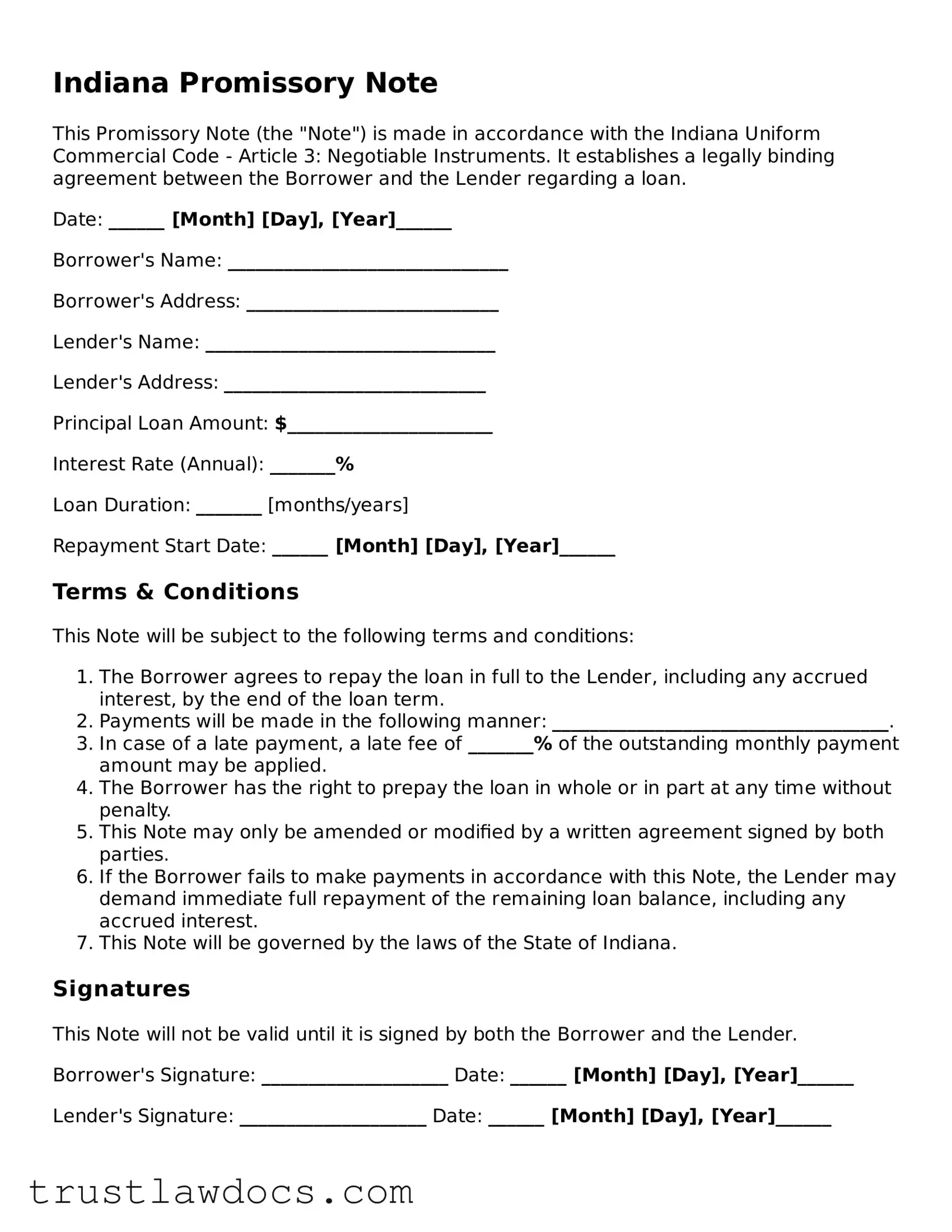Indiana Promissory Note
This Promissory Note (the "Note") is made in accordance with the Indiana Uniform Commercial Code - Article 3: Negotiable Instruments. It establishes a legally binding agreement between the Borrower and the Lender regarding a loan.
Date: ______ [Month] [Day], [Year]______
Borrower's Name: ______________________________
Borrower's Address: ___________________________
Lender's Name: _______________________________
Lender's Address: ____________________________
Principal Loan Amount: $______________________
Interest Rate (Annual): _______%
Loan Duration: _______ [months/years]
Repayment Start Date: ______ [Month] [Day], [Year]______
Terms & Conditions
This Note will be subject to the following terms and conditions:
- The Borrower agrees to repay the loan in full to the Lender, including any accrued interest, by the end of the loan term.
- Payments will be made in the following manner: ____________________________________.
- In case of a late payment, a late fee of _______% of the outstanding monthly payment amount may be applied.
- The Borrower has the right to prepay the loan in whole or in part at any time without penalty.
- This Note may only be amended or modified by a written agreement signed by both parties.
- If the Borrower fails to make payments in accordance with this Note, the Lender may demand immediate full repayment of the remaining loan balance, including any accrued interest.
- This Note will be governed by the laws of the State of Indiana.
Signatures
This Note will not be valid until it is signed by both the Borrower and the Lender.
Borrower's Signature: ____________________ Date: ______ [Month] [Day], [Year]______
Lender's Signature: ____________________ Date: ______ [Month] [Day], [Year]______
